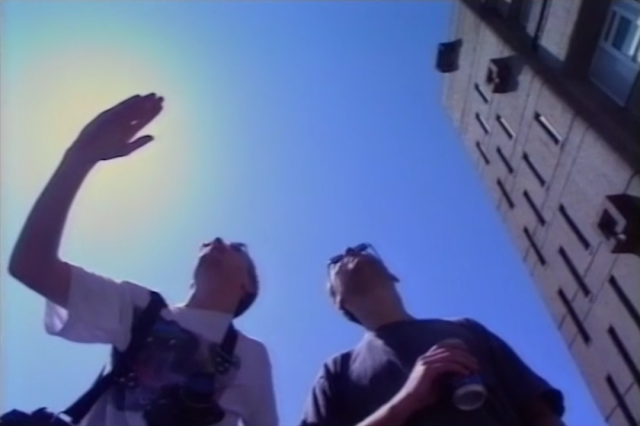Interview with Outskirts illustrator Eleanor Crow
In 2017 Eleanor Crow provided ten illustrations for my book Outskirts. Her work may be familiar to you from her celebrated cover illustrations for books such as Golden Hill or Grief is the Thing with Feathers, or her series of shop front illustrations showcased on Spitalfields Life. I asked her a few questions about her work. You can see more of her work on her website or on Twitter or Instagram.
- How did you first get into illustration? Has it been a fascination since childhood or a more recent passion?
I've been drawing and painting since childhood, but I hadn't planned to be an illustrator. I was more intrigued by theatre design at that time, and 3D stop-frame animation. We didn't have a TV, so anything I saw made a huge impression on me. In any case, I came late to illustration, as I was painting and printmaking first, and then designing book covers and bindings at Cape, Chatto and Vintage, then the Folio Society, and then Faber & Faber.
- Did you go to art school, or are you self-taught?
I have a BA in Fine Art: Drawing and Painting from Edinburgh, and an MA in Communication Design from Central Saint Martins. But many aspects of what I do are self-taught. We're always learning new things, from quite disparate sources.
- You have mastered many different styles. Do you have a typical way of working? Which mediums do you prefer to work in?
If I could, I would like to live many lives and do textiles, costume design, architecture, book design, animation, infographics, photography, printmaking and of course graphics and painting, which I still do. But illustration-wise, I work in watercolours mostly, and occasionally in line. In the watercolours, even the finest lines are painted with a brush. I work from real life where possible, and photographs if I have to for logistical reasons.
- There are lots of different reasons why people might know your work. There's your book cover illustrations for one. Are there any that you're particularly proud of?
I'm pleased with my cover illustrations for Golden Hill and Grief is the Thing With Feathers. For Golden Hill, I had been drawing canal-side houses for several days in Amsterdam just prior to reading the manuscript. The book is set in 1740s New York when it was New Amsterdam, and there's a wonderfully theatrical scene with figures running over the rooftops of townhouses lit up at night, so I used my drawings as reference for this. It's such a brilliant and spirited novel, and I was pleased at the response to the cover.
Grief is the Thing With Feathers was just a gift – it's a wonderful book, which I was given because of my name, and because the Crow is so deeply significant to the narrative. I'd been drawing crows on Hampstead Heath and in Wanstead Flats, so I simplified the shapes and silhouettes, trying to harness the spirit of Leonard Baskin, because of the Ted Hughes references in the book. I used to make big figure paintings in wide brushes using black ink, twisting a wooden brush end for the finer lines, so this is much closer to some of my college work.
- Your paintings of shop fronts have also been very widely shared online thanks to Spitalfields Life and the Gentle Author. When you started that series of artworks did you realise what a massive project it was to become?
I had only done five when the Gentle Author saw the drawing I made of Arthur's Café. He was keen to publish a set of twenty-one on Spitalfields Life, so I had to produce sixteen in three weeks, cycling madly around East London boroughs. It was a project I had plans for already, but everything speeded up after that. I produced 100 for an exhibition, but the project is ongoing.
- You combine working as an illustrator and artist with being a graphic designer for book covers. Is that process very different from your illustration work?
It's completely different, but I like the variety of work involved in cover design, working with a range of photographers, illustrators, printmakers, as well as responding to literature and working with typography. There's so much interesting work around – so many exciting creatives that I would like to work with – so it's good to work in a collaborative way on book cover projects with so many of them.
- As a creative artist in your own right is it tricky working with authors? Is it a collaborative process or do you like working in isolation?
I like working with authors. I got into cover design because I read so much – in the end, it's about interpreting the text, but giving a book a distinct visual presence, whether for new writing or reinterpreting classics. Designing for print is an incredibly rewarding process, particularly books, which endure long beyond most ephemera.
- For the ten beautiful illustrations you completed for Outskirts I was incredibly lucky that you mentioned you were exploring architectural illustration, and we talked about our mutual love of Gordon Cullen. What is it about his work that appeals to you?
Gordon Cullen has such a brilliant understanding of form and light, and the importance of architectural and urban space that he termed 'townscape'. But what sets his work apart is how he expresses it in lively line and tone, and judicious use of occasional colour. Every one of his drawings is a little masterpiece.
Do you have any other illustration heroes and what is it about their work that has inspired you?
Miroslav Sasek, Paul Hogarth, Rena Gardiner and David Gentleman are some of them. Their work is very different, but each combines acute observation with brilliant technique, as well as something so distinctively their own.
- I know you commission other print makers and illustrators for your book cover work. Are there illustrators or artists at work today you would love more people to take notice of? If so, who are they?
Yes, there are so many. I enjoy finding new illustrators and have worked with many at the early stages of their careers, as well as other much more established illustrators and printmakers. I was pleased when 'It's Nice That' came along, as it's the perfect format for helping to launch lesser-known illustrators. People are much more alert to that now.
- Do you have any advice for someone keen to take up illustration, either as a hobby or professionally?
Never stop observing. Make a whole visual world that's fun for you and engaging for others. Always meet a deadline. Be nice.
- What would be your dream illustration job?
An illustrated book.
- Do you sell your work? Can you be commissioned for new projects? How can people get in touch to enquire about it?
I sell work at exhibitions rather than directly, and I can be commissioned via my illustration website. But if you're an illustrator wanting to get in touch with me about book cover work, then please go via the Faber website, not my own. I don't mix the two.
- Thank you, Eleanor Crow!
 |
| From Outskirts, © Eleanor Crow |
- How did you first get into illustration? Has it been a fascination since childhood or a more recent passion?
I've been drawing and painting since childhood, but I hadn't planned to be an illustrator. I was more intrigued by theatre design at that time, and 3D stop-frame animation. We didn't have a TV, so anything I saw made a huge impression on me. In any case, I came late to illustration, as I was painting and printmaking first, and then designing book covers and bindings at Cape, Chatto and Vintage, then the Folio Society, and then Faber & Faber.
- Did you go to art school, or are you self-taught?
I have a BA in Fine Art: Drawing and Painting from Edinburgh, and an MA in Communication Design from Central Saint Martins. But many aspects of what I do are self-taught. We're always learning new things, from quite disparate sources.
- You have mastered many different styles. Do you have a typical way of working? Which mediums do you prefer to work in?
If I could, I would like to live many lives and do textiles, costume design, architecture, book design, animation, infographics, photography, printmaking and of course graphics and painting, which I still do. But illustration-wise, I work in watercolours mostly, and occasionally in line. In the watercolours, even the finest lines are painted with a brush. I work from real life where possible, and photographs if I have to for logistical reasons.
- There are lots of different reasons why people might know your work. There's your book cover illustrations for one. Are there any that you're particularly proud of?
I'm pleased with my cover illustrations for Golden Hill and Grief is the Thing With Feathers. For Golden Hill, I had been drawing canal-side houses for several days in Amsterdam just prior to reading the manuscript. The book is set in 1740s New York when it was New Amsterdam, and there's a wonderfully theatrical scene with figures running over the rooftops of townhouses lit up at night, so I used my drawings as reference for this. It's such a brilliant and spirited novel, and I was pleased at the response to the cover.
Grief is the Thing With Feathers was just a gift – it's a wonderful book, which I was given because of my name, and because the Crow is so deeply significant to the narrative. I'd been drawing crows on Hampstead Heath and in Wanstead Flats, so I simplified the shapes and silhouettes, trying to harness the spirit of Leonard Baskin, because of the Ted Hughes references in the book. I used to make big figure paintings in wide brushes using black ink, twisting a wooden brush end for the finer lines, so this is much closer to some of my college work.
- Your paintings of shop fronts have also been very widely shared online thanks to Spitalfields Life and the Gentle Author. When you started that series of artworks did you realise what a massive project it was to become?
I had only done five when the Gentle Author saw the drawing I made of Arthur's Café. He was keen to publish a set of twenty-one on Spitalfields Life, so I had to produce sixteen in three weeks, cycling madly around East London boroughs. It was a project I had plans for already, but everything speeded up after that. I produced 100 for an exhibition, but the project is ongoing.
 |
| © Eleanor Crow |
 |
| © Eleanor Crow |
 |
| © Eleanor Crow |
 |
| © Eleanor Crow |
- You combine working as an illustrator and artist with being a graphic designer for book covers. Is that process very different from your illustration work?
It's completely different, but I like the variety of work involved in cover design, working with a range of photographers, illustrators, printmakers, as well as responding to literature and working with typography. There's so much interesting work around – so many exciting creatives that I would like to work with – so it's good to work in a collaborative way on book cover projects with so many of them.
- As a creative artist in your own right is it tricky working with authors? Is it a collaborative process or do you like working in isolation?
I like working with authors. I got into cover design because I read so much – in the end, it's about interpreting the text, but giving a book a distinct visual presence, whether for new writing or reinterpreting classics. Designing for print is an incredibly rewarding process, particularly books, which endure long beyond most ephemera.
 |
| From Outskirts, © Eleanor Crow |
- For the ten beautiful illustrations you completed for Outskirts I was incredibly lucky that you mentioned you were exploring architectural illustration, and we talked about our mutual love of Gordon Cullen. What is it about his work that appeals to you?
Gordon Cullen has such a brilliant understanding of form and light, and the importance of architectural and urban space that he termed 'townscape'. But what sets his work apart is how he expresses it in lively line and tone, and judicious use of occasional colour. Every one of his drawings is a little masterpiece.
Do you have any other illustration heroes and what is it about their work that has inspired you?
Miroslav Sasek, Paul Hogarth, Rena Gardiner and David Gentleman are some of them. Their work is very different, but each combines acute observation with brilliant technique, as well as something so distinctively their own.
- I know you commission other print makers and illustrators for your book cover work. Are there illustrators or artists at work today you would love more people to take notice of? If so, who are they?
Yes, there are so many. I enjoy finding new illustrators and have worked with many at the early stages of their careers, as well as other much more established illustrators and printmakers. I was pleased when 'It's Nice That' came along, as it's the perfect format for helping to launch lesser-known illustrators. People are much more alert to that now.
- Do you have any advice for someone keen to take up illustration, either as a hobby or professionally?
Never stop observing. Make a whole visual world that's fun for you and engaging for others. Always meet a deadline. Be nice.
- What would be your dream illustration job?
An illustrated book.
- Do you sell your work? Can you be commissioned for new projects? How can people get in touch to enquire about it?
I sell work at exhibitions rather than directly, and I can be commissioned via my illustration website. But if you're an illustrator wanting to get in touch with me about book cover work, then please go via the Faber website, not my own. I don't mix the two.
- Thank you, Eleanor Crow!












Comments
Post a Comment